Histology
5.0(2)
5.0(2)
Card Sorting
1/23
There's no tags or description
Looks like no tags are added yet.
Study Analytics
Name | Mastery | Learn | Test | Matching | Spaced |
|---|
No study sessions yet.
24 Terms
1
New cards
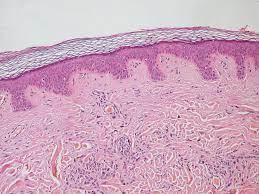
areolar connective tissue
a type of loose connective tissue found throughout the body. It is composed of a gel-like ground substance with collagen and elastic fibers dispersed within it. Areolar tissue provides support and flexibility to organs and helps in the diffusion of nutrients and waste products. It also plays a role in immune response and inflammation.
2
New cards
ground substance
a gel-like substance found in the extracellular matrix of connective tissues. It fills the space between cells and fibers, providing support and cushioning. It consists of water, proteoglycans, glycosaminoglycans, and glycoproteins.

3
New cards
adipose connective tissue
a type of connective tissue that stores fat cells. It is found throughout the body and serves as a source of energy, insulation, and cushioning. Adipose tissue is composed of adipocytes, which are specialized cells that store triglycerides. This tissue is important for maintaining energy balance and regulating body temperature.
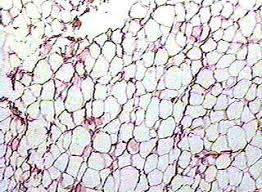
4
New cards
hyaline cartilage
a type of connective tissue found in the body. It is characterized by its smooth and glassy appearance. Hyaline cartilage provides support and flexibility to various structures, such as the nose, trachea, and joints. It is composed of collagen fibers and proteoglycans, which give it its unique properties.
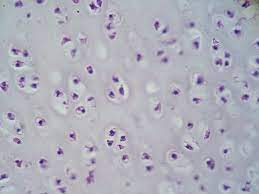
5
New cards
Osseous or Bone Tissue
a type of connective tissue that forms the structural framework of the skeletal system. It is composed of specialized cells called osteocytes, which are embedded in a matrix of collagen fibers and mineral salts, primarily calcium and phosphate. Bone tissue provides support, protection, and facilitates movement. It also serves as a reservoir for minerals and is involved in the production of blood cells through a process called hematopoiesis.
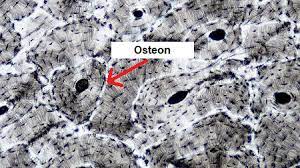
6
New cards
Blood
a vital fluid in the human body that carries oxygen, nutrients, hormones, and waste products. It consists of red blood cells, white blood cells, platelets, and plasma. Red blood cells transport oxygen, while white blood cells help fight infections. Platelets aid in blood clotting to prevent excessive bleeding. Plasma is a yellowish liquid that carries the blood cells and other substances throughout the body.
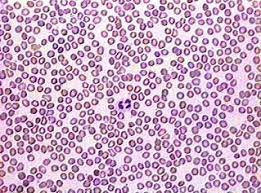
7
New cards
Simple Squamous Epithelium
a type of tissue that consists of a single layer of flat, scale-like cells. It is found in areas where diffusion and filtration are important, such as the lining of blood vessels, air sacs in the lungs, and the inner lining of the heart and lymphatic vessels. It provides a thin barrier for the exchange of gases, nutrients, and waste products.
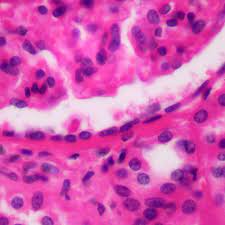
8
New cards
Simple Cuboidal Epithelium
a type of tissue found in the body. It consists of a single layer of cube-shaped cells. This type of epithelium is commonly found in areas where secretion and absorption occur, such as the kidney tubules and the ducts of certain glands. It provides protection and helps in the exchange of substances between the cells and their environment.
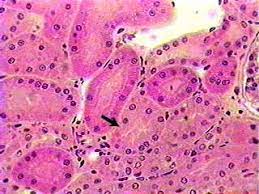
9
New cards
Simple Columnar Epithelium
a type of tissue found in the body. It consists of a single layer of tall, column-shaped cells. This type of epithelium is typically found lining the digestive tract, where it functions in absorption and secretion. It can also be found in other areas of the body, such as the respiratory tract and reproductive system. Simple columnar epithelium is characterized by its elongated shape and the presence of specialized structures, such as microvilli or cilia, on the cell surface. Overall, it plays an important role in maintaining the function and integrity of various organs and systems in the body.

10
New cards
Goblet Cells
specialized epithelial cells found in the respiratory and digestive tracts. They are named after their goblet-like shape, with a narrow base and a wide, rounded top. These cells produce and secrete mucus, a slimy substance that helps protect and lubricate the lining of the organs. The mucus produced by goblet cells helps trap foreign particles, such as dust or pathogens, and facilitates their removal from the body. Goblet cells are particularly abundant in the respiratory tract, where they play a crucial role in maintaining the health of the airways.
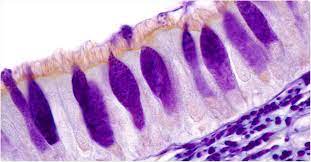
11
New cards
Pseudostratified Ciliated Columnar Epithelium
a type of tissue found in the respiratory tract. It appears stratified due to the varying heights of its cells, but all cells are in contact with the basement membrane. The presence of cilia on the surface of the cells helps in moving mucus and trapped particles out of the respiratory system. This type of epithelium is important for protecting and maintaining the health of the respiratory tract.
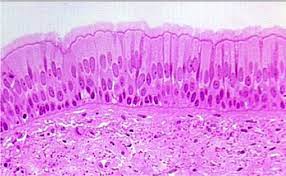
12
New cards
Cilia
small, hair-like structures found on the surface of certain cells. They are composed of microtubules and are capable of rhythmic, coordinated movements. Cilia play important roles in various biological processes, such as moving mucus and other substances along the respiratory tract, aiding in the movement of eggs in the female reproductive system, and facilitating the flow of fluid in the fallopian tubes. They are also involved in sensory functions, such as detecting movement and maintaining balance in the inner ear.

13
New cards
Stratified Squamous Epithelium
a type of tissue found in the body. It consists of multiple layers of flat, scale-like cells. This type of epithelium is commonly found in areas that experience wear and tear, such as the skin, mouth, esophagus, and vagina. Its main function is to provide protection against mechanical stress, abrasion, and pathogens.
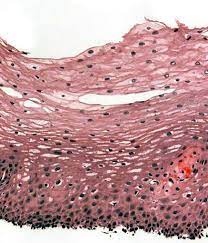
14
New cards
Basement Membrane
a thin, specialized extracellular matrix that separates and supports the epithelial and endothelial cells in various tissues. It is composed of proteins, including collagen and laminin, and provides structural integrity and signaling cues for cell adhesion, migration, and differentiation. The basement membrane plays a crucial role in tissue development, maintenance, and repair. It is found in organs such as the skin, lungs, kidneys, and blood vessels.
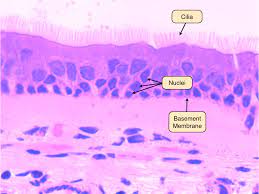
15
New cards
Apical Surface
to the top or outermost surface of a cell or tissue. It is typically exposed to the external environment or a body cavity. In epithelial tissues, the apical surface is characterized by specialized structures such as microvilli or cilia, which aid in absorption, secretion, or movement. The apical surface plays a crucial role in various physiological processes, including nutrient absorption in the intestines, gas exchange in the lungs, and sensory perception in the sensory organs.

16
New cards
Smooth Muscle
a type of muscle tissue found in the walls of hollow organs, such as the intestines, blood vessels, and airways. It is characterized by its spindle-shaped cells and involuntary contractions. Smooth muscle is responsible for various functions, including regulating blood flow, digestion, and breathing.
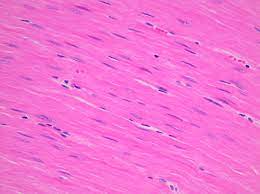
17
New cards
Caridac muscle
a specialized type of muscle tissue found in the walls of the heart. It is responsible for the contraction and pumping of blood throughout the body. Cardiac muscle is striated and involuntary, meaning it contracts without conscious control. It has a unique ability to generate and conduct electrical impulses, allowing for coordinated and rhythmic contractions of the heart.
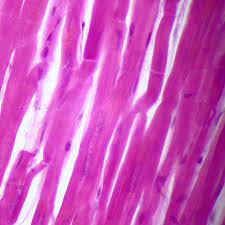
18
New cards
Skeletal Muscle
a type of muscle tissue that is attached to bones and allows for voluntary movement of the body. It is composed of long, cylindrical cells called muscle fibers. Skeletal muscle is striated, meaning it has a striped appearance under a microscope due to the arrangement of contractile proteins. It is also multinucleated, with multiple nuclei located along the length of each muscle fiber. Skeletal muscle is under conscious control and is responsible for movements such as walking, running, and lifting objects. It is also involved in maintaining posture and generating heat.
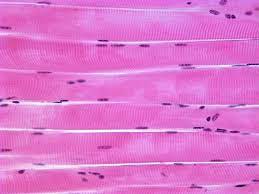
19
New cards
neuron
a specialized cell in the nervous system that transmits information through electrical and chemical signals. It is the basic building block of the nervous system and plays a crucial role in processes such as perception, cognition, and motor control. Neurons consist of a cell body, dendrites, and an axon, which allows them to receive, process, and transmit signals, respectively. They are responsible for the communication and coordination of activities within the body.
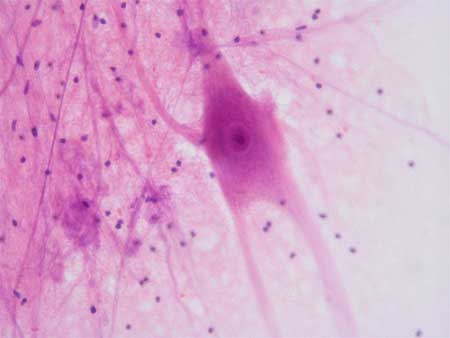
20
New cards
21
New cards
22
New cards
23
New cards
24
New cards